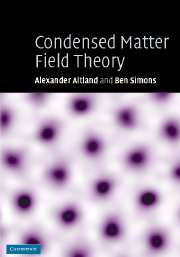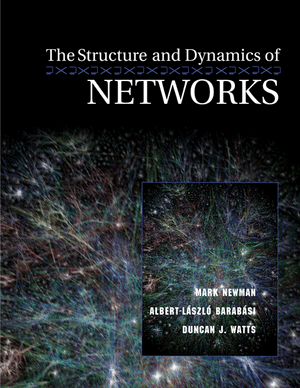Dragomir, Sorin, Tomassini, Giuseppe
Differential Geometry and Analysis on CR Manifolds
 Series: Progress in Mathematics , Vol. 246
Series: Progress in Mathematics , Vol. 246
2006, XIV, 487 p., Hardcover
ISBN: 0-8176-4388-5
About this book
The study of CR manifolds lies at the intersection of three main
mathematical disciplines: partial differential equations, complex
analysis in several complex variables, and differential geometry.
While the PDE and complex analytic aspects have been intensely
studied in the last fifty years, much effort has recently been
made to understand the differential geometric side of the subject.
This monograph provides a unified presentation of several
differential geometric aspects in the theory of CR manifolds and
tangential Cauchy?Riemann equations. It presents the major
differential geometric acheivements in the theory of CR
manifolds, such as the Tanaka?Webster connection, Fefferman's
metric, pseudo-Einstein structures and the Lee conjecture, CR
immersions, subelliptic harmonic maps as a local manifestation of
pseudoharmonic maps from a CR manifold, Yang?Mills fields on CR
manifolds, to name a few. It also aims at explaining how certain
results from analysis are employed in CR geometry.
Motivated by clear exposition, many examples, explicitly worked-out
geometric results, and stimulating unproved statements and
comments referring to the most recent aspects of the theory, this
monograph is suitable for researchers and graduate students in
differential geometry, complex analysis, and PDEs.
Table of contents
Preface.- CR Manifolds.- The Fefferman Metric.- The CR Yamabe
Problem.- Pseudoharmonic Maps.- Pseudo-Einstein Manifolds.-
Pseudohermitian Immersions.- Quasiconformal Mappings.- Yang?Mills
Fields on CR Manifolds.- Spectral Geometry.- Appendix.-
Bibliography.- Index.
Lam, T.Y.
Serre's Problem on Projective Modules
 Series: Springer Monographs in Mathematics
Series: Springer Monographs in Mathematics
2006, XXI, 401 p., Hardcover
ISBN: 3-540-23317-2
About this book
This book covers the area of "Serre's Problem on Projective
Modules" thoroughly, and from very many different angles. It
presents the broadest and most comprehensive view available in
the literature on the mathematics of "Serre's Conjecture".
The author's original treatment of Serre's Conjecture in "Lecture
Notes in Mathematics" (Vol. 635) has been completely worked
over and expanded into a multifaceted exposition suitable for
experts and yet easily accessible to beginners. Segments of new
material in the book include an enriched coverage of stably free
modules and the basic calculus of unimodular rows, Suslin's
Normality and n-Factorial Theorems, as well as his fundamental
work on the K1 analogue of Serre's Conjecture for polynomial
rings. Another new feature of the book is a long survey chapter
on the further developments in many acts and ramifications on
Serre's Problem that took place in the "post-Quillen-Suslin
era", from 1977 to the present.
Table of contents
Introduction.- The "Classical" Results on Serre's
Conjecture.- Two Elementary Proofs of Serre's Conjecture.-
Horrocks' Theorem.- Quillen's Method.- K1 Analogue of Serre's
Conjecture.- The Quadratic Analogue of Serre's Conjecture.- New
Developments (since 1977).- References.
Enns, Richard H., McGuire, George C.
Computer Algebra Recipes
An Introductory Guide to the Mathematical Models of Science
 2006, X, 430 p. 110 illus., Softcover
2006, X, 430 p. 110 illus., Softcover
ISBN: 0-387-25767-5
About this textbook
Computer algebra systems are revolutionizing the teaching, the
learning, and the exploration of science. Not only can students
and researchers work through mathematical models more efficiently
and with fewer errors than with pencil and paper, they can also
easily explore, both analytically and numerically, more complex
and computationally intensive models.
Aimed at science and engineering undergraduates at the sophomore/junior
level, this introductory guide to the mathematical models of
science is filled with examples from a wide variety of
disciplines, including biology, economics, medicine, engineering,
game theory, mathematics, physics, and chemistry. The topics are
organized into the Appetizers dealing with graphical aspects, the
Entrees concentrating on symbolic computation, and the Desserts
illustrating numerical simulation.
The heart of the text is a large number of computer algebra
recipes based on the Maple 10 software system. These have been
designed not only to provide tools for problem solving, but also
to stimulate the readerfs imagination. Associated with each
recipe is a scientific model or method and an interesting or
amusing story (accompanied with a thought-provoking quote) that
leads the reader through the various steps of the recipe. The
recipes are also included on the CD-ROM enclosed with the book.
Each section of recipes is followed by a set of problems that
readers can use to check their understanding or to develop the
topic further.
This text is the first of two volumes, the advanced guide, aimed
at junior/senior/graduate level students, dealing with more
advanced differential equation
Table of contentsPreface.- Introduction.- The Appetizers.- The
Pictures of Science.- Deriving Model Equations.- The Entrees.-
Algebraic Models.- Difference Equation Models.- The Desserts.-
Monte Carlo Methods.- Fractal Patterns.
Carmona, Rene A., Tehranchi, Michael R.
Interest Rate Models:
an Infinite Dimensional Stochastic Analysis Perspective
 Series: Springer Finance
Series: Springer Finance
2006, XIV, 235 p., Hardcover
ISBN: 3-540-27065-5
About this book
Interest Rate Models: an Infinite Dimensional Stochastic Analysis
Perspective studies the mathematical issues that arise in
modeling the interest rate term structure. These issues are
approached by casting the interest rate models as stochastic
evolution equations in infinite dimensional function spaces. The
book is comprised of three parts. Part I is a crash course on
interest rates, including a statistical analysis of the data and
an introduction to some popular interest rate models. Part II is
a self-contained introduction to infinite dimensional stochastic
analysis, including SDE in Hilbert spaces and Malliavin calculus.
Part III presents some recent results in interest rate theory,
including finite dimensional realizations of HJM models,
generalized bond portfolios, and the ergodicity of HJM models.
Table of contents
Resende, Mauricio G.C.; Pardalos, Panos M. (Eds.)
Handbook of Optimization in Telecommunications
 2006, XXXII, 1134 p. 129 illus., Hardcover
2006, XXXII, 1134 p. 129 illus., Hardcover
ISBN: 0-387-30662-5
About this book
This comprehensive handbook brings together experts who use
optimization to solve problems that arise in telecommunications.
It is the first book to cover in detail the field of optimization
in telecommunications. Recent optimization developments that are
frequently applied to telecommunications are covered. The
spectrum of topics covered includes planning and design of
telecommunication networks, routing, network protection,
grooming, restoration, wireless communications, network location
and assignment problems, Internet protocol, World Wide Web, and
stochastic issues in telecommunications. The bookfs objective
is to provide a reference tool for the increasing number of
scientists and engineers in telecommunications who depend upon
optimization.
Table of contents
Alexander Altland / Universitat zu Koln
Ben Simons / University of Cambridge
Condensed Matter Field Theory
 Hardback (ISBN-13: 9780521845083 | ISBN-10: 0521845084)
Hardback (ISBN-13: 9780521845083 | ISBN-10: 0521845084)
June 2006 | 636 pages | 247 x 174 mm
Over the past few decades, in concert with ground-breaking
experimental advances, condensed matter theory has drawn
increasingly from the language of low-energy quantum field theory.
This primer is aimed at elevating graduate students of condensed
matter theory to a level where they can engage in independent
research. It emphasizes the development of modern methods of
classical and quantum field theory with applications oriented
around condensed matter physics. Topics covered include second
quantization, path and functional field integration, mean-field
theory and collective phenomena, the renormalization group, and
topology. Conceptual aspects and formal methodology are
emphasized, but the discussion is rooted firmly in practical
experimental application. As well as routine exercises, the text
includes extended and challenging problems, with fully worked
solutions, designed to provide a bridge between formal
manipulations and research-oriented thinking. This book will
complement graduate level courses on theoretical quantum
condensed matter physics.
* Spans the field of modern condensed matter theory focusing on
field theory techniques
* Written to facilitate learning, with numerous challenging
exercises, with fully worked solutions, aimed at physicists
starting graduate-level courses
* The theoretical methods are firmly set in concrete experimental
applications
Contents
1. From particles to fields; 2. Second quantisation; 3. Feynman
path integral; 4. Functional field integral; 5. Perturbation
theory; 6. Broken symmetry and collective phenomena; 7. Response
functions; 8. The renormalization group; 9. Topology;
Bibliography.
Mark Newman, Albert-Laszlo Barabasi, and Duncan J. Watts
The Structure and Dynamics of Networks
 Paper | 2006 |ISBN: 0-691-11357-2
Paper | 2006 |ISBN: 0-691-11357-2
Cloth | 2006 |ISBN: 0-691-11356-4
624 pp. | 8 1/2 x 11 | 182 line illus.
From the Internet to networks of friendship, disease
transmission, and even terrorism, the concept--and the reality--of
networks has come to pervade modern society. But what exactly is
a network? What different types of networks are there? Why are
they interesting, and what can they tell us? In recent years,
scientists from a range of fields--including mathematics,
physics, computer science, sociology, and biology--have been
pursuing these questions and building a new "science of
networks." This book brings together for the first time a
set of seminal articles representing research from across these
disciplines. It is an ideal sourcebook for the key research in
this fast-growing field.
The book is organized into four sections, each preceded by an
editors' introduction summarizing its contents and general theme.
The first section sets the stage by discussing some of the
historical antecedents of contemporary research in the area. From
there the book moves to the empirical side of the science of
networks before turning to the foundational modeling ideas that
have been the focus of much subsequent activity. The book closes
by taking the reader to the cutting edge of network science--the
relationship between network structure and system dynamics. From
network robustness to the spread of disease, this section offers
a potpourri of topics on this rapidly expanding frontier of the
new science.
Mark Newman is Professor of Physics at the University of Michigan.
Albert-Laszlo Barabasi is Emil T. Hofman Professor of Physics at
the University of Notre Dame. He is the author of Linked: The New
Science of Networks (Perseus Books). Duncan J. Watts is Associate
Professor of Sociology at Columbia University. He is the author
of Six Degrees: The Science of a Connected Age (W. W. Norton) and
Small Worlds: The Dynamics of Networks Between Order and
Randomness (Princeton).
Endorsements:
"This excellent collection of papers will provide great one-stop
shopping to those working in the evolving world of network
research. It may very well become a standard resource for the
growing number of courses on networks now beginning to pervade
curricula. Indeed, a current difficulty in teaching such a course
is that there are no good texts, and a quick look around the Web
reveals that almost all these courses are taught using research
papers, many of which appear in this collection."--Dan
Rockmore, Dartmouth College
"I read this anthology with great interest. The editors took
pains to locate (and even translate) a significant number of
papers predating the recent surge of interest in the science of
networks, and they do a fine job of clarifying what exactly is
new (and what is not so new) in the modern approach as reflected
in the vast literature on the subject. The introduction to each
section nicely summarizes the main findings of the featured
articles."--Sergei Maslov, Brookhaven National Laboratory
Table of Contents
 Series: Progress in Mathematics , Vol. 246
Series: Progress in Mathematics , Vol. 246  Series: Springer Monographs in Mathematics
Series: Springer Monographs in Mathematics  2006, X, 430 p. 110 illus., Softcover
2006, X, 430 p. 110 illus., Softcover Series: Springer Finance
Series: Springer Finance 2006, XXXII, 1134 p. 129 illus., Hardcover
2006, XXXII, 1134 p. 129 illus., Hardcover Hardback (ISBN-13: 9780521845083 | ISBN-10: 0521845084)
Hardback (ISBN-13: 9780521845083 | ISBN-10: 0521845084) Paper | 2006 |ISBN: 0-691-11357-2
Paper | 2006 |ISBN: 0-691-11357-2